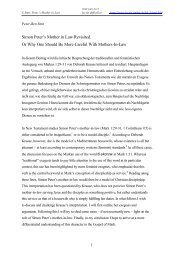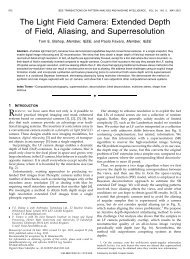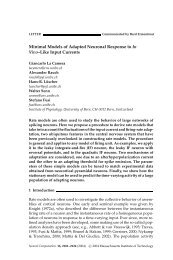Bernese GNSS Software Version 5.2 Tutorial
Bernese GNSS Software Version 5.2 Tutorial
Bernese GNSS Software Version 5.2 Tutorial
- No tags were found...
Create successful ePaper yourself
Turn your PDF publications into a flip-book with our unique Google optimized e-Paper software.
7 Additional ExamplesFurthermore, you have to consider the “SIGNAL STRENGTH REQUIREMENTS” for smoothedRINEX files (see above):After importing the data into the <strong>Bernese</strong> format you have to repeat the receiver clocksynchronization with program CODSPP. The options are identical to the settings in Section4.2.1. The only difference is the option “Mark outliers in obs. files” in the last input panel:depending on your preprocessing chain it is recommended to select:BOTH if you have screened phase and code data in RNXSMT, because it is assumed thatthe corresponding phase measurement is also bad if a problematic code data recordhas passed RNXSMT.CODE if you have used RNXSMT to only screen and smooth code observations so far.From problems in the code data cannot be deduced the quality of the correspondingphase measurements.If you have not yet cleaned the phase observations in RNXSMT (approach with precisehigh–rate clocks available), you have to run MAUPRP now ("Menu>Processing>Phasepreprocessing"). You need for this purpose a precise satellite clock corrections for all satellitesand with the full sampling of 30 seconds (or even higher). Select “Zero-difference observationfiles” instead of “Single-difference observation files” and introduce a consistent set of “<strong>GNSS</strong> standardorbits”, “Pole file”, and “Satellite clocks” in panel “MAUPRP 1: Input Files”. An additionalpanel “MAUPRP 7: Clock Events” will be displayed (see online help for further details). It isPage 116AIUB
















